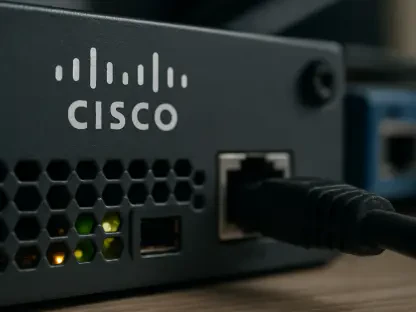Imagine a world where a smartphone can connect to high-speed internet from the most isolated mountain peak or the middle of an ocean, far beyond the reach of traditional cell towers, transforming how we stay connected globally. This vision of seamless global connectivity is no longer confined to science fiction but is becoming a tangible goal for the mobile industry. Early steps are already visible with services like T-Mobile’s T-Satellite in the US and One NZ’s texting feature in New Zealand, which enable basic communication in areas lacking terrestrial coverage. These pioneering efforts, though limited to narrowband applications, signal a transformative shift toward integrating satellite technology with everyday devices. The question remains whether smartphones can evolve to support full broadband capabilities via satellite by the end of this decade. This article delves into the current state of this technology, the hurdles that must be overcome, and the projected timeline for achieving this ambitious milestone, offering a glimpse into the future of mobile connectivity.
Early Steps in Satellite-to-Smartphone Integration
The journey toward satellite-driven smartphone connectivity has already begun, albeit with modest capabilities that hint at a much larger potential. Services like T-Mobile’s T-Satellite and One NZ’s texting platform utilize partnerships with satellite operators such as Starlink to deliver narrowband communication, capped at around 400 Kbps under the 3GPP Release 17 standards. This speed suffices for texting and location sharing, proving invaluable for emergency situations or remote regions where cell towers are nonexistent. However, the technology falls short of delivering the data-intensive experiences users expect from modern mobile networks. With only about 60 smartphone models from manufacturers like Samsung, Motorola, and Google currently compatible, accessibility remains a significant barrier. These early implementations mark a crucial starting point, demonstrating the feasibility of satellite-to-device communication while exposing the gaps that must be bridged to reach broader adoption and enhanced functionality.
Beyond the initial rollout, the focus of these services is squarely on utility in underserved areas, rather than competing with urban terrestrial networks. The ability to send a message or trigger an SOS alert from a wilderness trail offers a lifeline where traditional infrastructure fails. Yet, the limitation to basic functions underscores the infancy of this technology in the smartphone ecosystem. Real-world testing, such as with T-Mobile’s service on devices like the Samsung Galaxy S25 Ultra, shows promise even in challenging conditions like indoor environments without a clear sky view. Still, the narrowband constraint means that streaming, browsing, or other high-data activities remain out of reach. The industry recognizes this as a foundational phase, setting the stage for more robust solutions through incremental advancements in standards and hardware. This early adoption phase is critical for gathering user feedback and refining the integration of satellite services into everyday mobile experiences.
Barriers to Broadband via Satellite
Achieving satellite broadband for smartphones is fraught with technical complexities that demand innovative solutions and patience. Experts highlight challenges such as signal delays caused by the vast distances between Low Earth Orbit (LEO) satellites and devices on the ground, which can disrupt real-time applications. Additionally, the wide beam coverage of satellites limits capacity, making it difficult to serve dense user bases efficiently. Frequent handovers—where a device must switch between satellites as they move across the sky—further complicate connectivity, risking dropped connections. Professor Rob Maunder from AccelerComm emphasizes that these issues, combined with signal loss and Doppler effects from satellite motion, create a formidable barrier to seamless high-speed data. Overcoming these obstacles requires not just technological breakthroughs but also a coordinated effort to enhance infrastructure both in space and on the ground, ensuring reliability for future broadband aspirations.
Another layer of difficulty lies in aligning device capabilities with evolving satellite networks, a process that cannot be rushed. Current smartphones, even those supporting satellite communication, are designed for narrowband services, lacking the hardware to handle higher data rates. The industry must develop chipsets and antennas capable of managing the increased demands of broadband while maintaining energy efficiency—a critical factor for handheld devices. Moreover, regulatory hurdles and spectrum allocation issues add to the complexity, as global standards must be harmonized to prevent fragmentation. These technical and logistical challenges suggest that the path to broadband is a gradual one, necessitating a step-by-step approach to innovation. Each solution, from improved satellite constellations to advanced modems, must be backward-compatible to avoid alienating users with older devices, ensuring a smooth transition as the technology matures over the coming years.
Roadmap to High-Speed Satellite Connectivity
The mobile industry has laid out a phased timeline to transition from narrowband to broadband satellite services, with significant milestones on the horizon. Analysts like Luke Pearce from CCS Insight predict that wideband connectivity, offering speeds up to 10 Mbps, could emerge by 2027, providing a stepping stone to richer data experiences. True broadband, surpassing this threshold for applications akin to terrestrial 5G, is targeted for 2030, contingent on advancements in LEO satellite constellations and ground infrastructure. The 3GPP Release 18, already finalized, sets the foundation for enhanced data services, while Release 19 aims to reduce latency by embedding 5G base station functions directly into satellites. Hardware developments, such as Qualcomm’s X85 modem chipset, are expected to enable broader device compatibility soon, pushing the boundaries of what smartphones can achieve with satellite links and paving the way for widespread adoption.
This progressive approach is not just about speed but also about refining the user experience to mirror traditional mobile networks. Interim goals include expanding coverage to more challenging environments, such as dense forests or urban canyons, where satellite signals struggle to penetrate. The integration of more sophisticated LEO networks, with thousands of satellites working in tandem, will be crucial to ensuring consistent connectivity across diverse terrains. Additionally, smartphone manufacturers must prioritize embedding satellite-ready technology into a wider range of models, making the feature a standard rather than a niche offering. Each phase of this roadmap builds on the last, addressing specific limitations while scaling infrastructure to handle the anticipated surge in demand. By 2030, the vision is for satellite broadband to support everything from video calls to cloud-based applications, transforming how connectivity is perceived in even the most remote corners of the globe.
Collaborative Efforts Driving Progress
Partnerships between telecom operators and satellite providers form the backbone of this technological evolution, blending expertise from both domains to close coverage gaps. T-Mobile’s collaboration with Starlink in the US exemplifies how terrestrial networks can leverage space-based solutions to extend reach, while Vodafone’s alliance with AST SpaceMobile in Europe targets similar outcomes. Regulatory bodies, such as Ofcom in the UK, are also playing a pivotal role by facilitating spectrum allocation and policy frameworks that encourage innovation. These cooperative efforts are essential for scaling the infrastructure needed to support satellite connectivity on a global scale, particularly in regions where building traditional cell towers is impractical. The synergy between these players ensures that resources are pooled effectively, accelerating the development of systems capable of handling future broadband demands.
Beyond high-profile partnerships, the collaborative spirit extends to standardization bodies like 3GPP, which are critical for ensuring interoperability across markets. The alignment of technical specifications through releases like 18 and 19 helps prevent a fragmented ecosystem where devices and services fail to communicate seamlessly. This collective push also involves satellite operators expanding their constellations to offer denser coverage, reducing latency, and increasing capacity for data-heavy applications. Meanwhile, telecom companies are investing in ground stations and backhaul networks to integrate satellite data with existing systems, creating a hybrid model of connectivity. Such efforts signal a global commitment to making satellite broadband a reality, with each stakeholder contributing unique strengths. The success of these collaborations will likely determine how quickly and efficiently the industry can deliver high-speed internet to smartphones worldwide.
Consumer Demand and Market Realities
The appeal of satellite connectivity varies widely depending on geography and existing infrastructure, shaping its market trajectory. In densely connected regions like the UK, where terrestrial networks are robust, consumer enthusiasm is tepid—surveys by CCS Insight indicate that only about half of individuals are willing to pay extra for satellite features. The perception is often that current coverage suffices for most needs, relegating satellite services to a novelty rather than a necessity. This lukewarm reception poses a challenge for operators aiming to justify the substantial investments required for broadband-capable satellite networks. Without widespread demand in urban centers, the focus may remain on niche applications, potentially slowing the pace of technological rollout and adoption in well-served areas over the next few years.
Conversely, in remote or underserved regions, the value of satellite connectivity shines brightly, offering a lifeline where traditional networks fail. Farmers in rural areas, adventurers in uncharted territories, or communities hit by natural disasters stand to gain immensely from the ability to stay connected for critical communications. Here, the promise of broadband by 2030 holds transformative potential, enabling access to education, telemedicine, and economic opportunities previously out of reach. This disparity in demand highlights the need for tailored strategies—operators might prioritize deployment in high-need areas first, using success stories to build momentum elsewhere. Market dynamics will play a decisive role in determining how resources are allocated, with consumer readiness in different regions influencing the speed and scope of satellite broadband integration into mainstream smartphone usage.
Future Prospects for Global Reach
The ultimate ambition of the mobile industry is to erase connectivity dead zones, ensuring that smartphones can access high-speed data anywhere on Earth through satellite broadband. This vision of universal access aligns with the phased advancements in 3GPP standards, targeting a user experience comparable to terrestrial 5G by 2030. Imagine streaming content, participating in virtual meetings, or gaming on the go, whether in a bustling city or a desolate tundra. Such a future would redefine mobility, making location irrelevant to digital engagement. The ongoing enhancements in satellite technology, coupled with device innovations, aim to make this seamless integration a standard feature, fundamentally altering how connectivity is perceived and utilized across diverse scenarios and demographics.
Looking ahead, the focus must shift to actionable strategies that sustain this momentum and address lingering uncertainties. Prioritizing investment in LEO satellite networks to boost coverage and capacity will be essential, as will ensuring that smartphone manufacturers embed compatible hardware in affordable models. Governments and regulators should continue fostering an environment conducive to innovation through supportive policies and spectrum management. Additionally, educating consumers about the benefits of satellite connectivity, especially in regions with limited interest, could help drive acceptance. The groundwork laid in previous years shows promise, and building on those efforts with targeted initiatives ensures that the dream of global broadband access via smartphones moves closer to reality, setting a precedent for future technological leaps.









